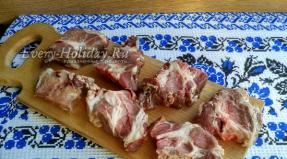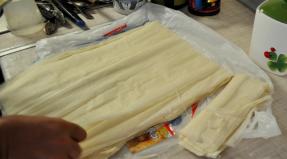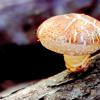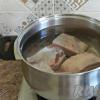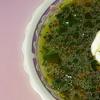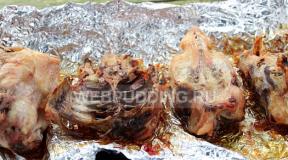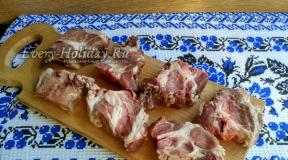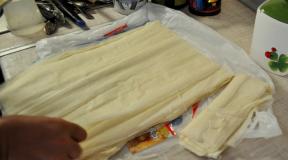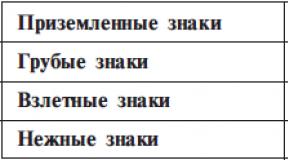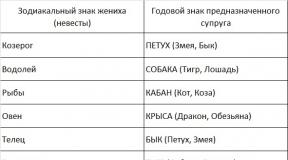Turkish baklava made from phyllo dough. Baklava from phyllo dough Baklava from phyllo dough recipe with
Those who have been to Turkey and tried real baklava will understand me. A magical, tender, melting, extraordinary delicacy cannot leave any sweet tooth indifferent. The disgrace that is sold in our stores under the name baklava (I’m talking about Ukrainian versions) has nothing in common with a real Turkish dessert.
Thank you for the place-class!
Yesterday I saw off my guest - an absolutely amazing woman came to me from Turkey, who hosts more than one television show in her homeland, regularly meets with people who know how to create beautiful or tasty things with their own hands, writes books about the culinary traditions of various countries, and hosts an column in a Turkish newspaper. When Tizhen was going to visit me, I was asked what I wanted as a gift from sunny Turkey. Baklava is my oldest passion, and that's why I asked... for a master class on baking this delicacy. The biggest problem turned out to be that in Kyiv it is impossible to buy filo dough, which is necessary for making baklava. Tizhen brought the packaging with her. And I had great pleasure watching her create! An incredible surprise for me was the fact that it turns out that baklava is prepared very, very simply. For some reason, I thought it was an incredibly complex process with a lot of manipulations, but in reality everything is simple and very easy.
In the morning, the husband, looking at the last two pieces of baklava, said:
- I don’t even feel like eating...
- Why??? Didn't you like it?
- That’s the problem, I liked it. But now I’ll eat it and nothing else will happen... It’s sad.
To prepare baklava Tizhen took:
1 pack of phyllo dough (450 g);
200 g butter;
1.5 cups ground walnuts;
1.2 glasses of water;
1.5 cups sugar;
1 tsp. lemon juice.

This is the first time I've seen phyllo - the dough is amazing. It looks like baking paper - transparent, light, quite elastic. Tizhen said that, of course, there are craftswomen who spend years learning to make phyllo, and do it perfectly by hand, but it is very, very difficult, so for a long time baklava has been prepared from dough kneaded and rolled out in an industrial environment.
Unknowingly, it seemed to me that phyllo was very similar to our puff pastry. Alas, only out of ignorance - in reality there is nothing in common.
First - syrup.
It’s as simple as that, nothing special - mix sugar with water, bring to a boil and simmer over medium heat for 5 minutes, then reduce the heat to low and simmer the syrup for about 15 minutes. Pour lemon juice into another bowl, pour the syrup into it, stir and leave to cool. If you make the syrup in advance, it is not necessary to pour it into another container; this is done solely so that the liquid cools faster.

Melt the butter. It's even simpler here. There’s not even anything to write about to beautifully illustrate the process.
Next you need to prepare a mold, a brush, turn on the oven to preheat it to 180 degrees.
And the most exciting thing will begin - the process of magic...
Place a block of phyllo dough on a board. Using a sharp knife, divide in half, and then cut off the excess - the pieces of dough should be equal in size to the size of the form in which you will prepare the baklava (I’ll tell you later how we disposed of the leftovers, it was no less tasty!).

So, we got two blocks of about 40 sheets each.
The dough dries out quickly, so Tizhen covered it with a towel while she did the rest of the preparations.
Grease the baking dish with melted butter. Lay out 2 sheets of dough. Lubricate them with oil using a pastry brush. Cover with two sheets of dough. Lubricate with oil - and so on until the leaves from the first block of dough are gone.

Lubricate the last layer with oil. Scatter the chopped nuts evenly.


Dip a sharp knife into hot water and cut the future baklava into rectangles. The secret is in the correct cutting - to get a fluffy pakhalava, cut the dough only to the nut layer, up to half - thanks to this, only the top cakes will rise during baking.


Place the pan with baklava in the preheated oven on the middle shelf. Bake for about 25 minutes, so reduce the heat to 160 degrees, bake for about 25 minutes more. Turn off the oven, take out the baklava, leave in the pan at room temperature for 10 minutes.

Using the same knife, cut the baklava all the way through. This step can be a little complicated (cutting phyllo this way is not easy), but the result is worth it. 
Using a spoon, pour the syrup evenly over the baklava. It is important to try to pour the bulk of the syrup into the cut areas, between individual cakes, otherwise the baklava will not turn out the way it should be.

Leave the baklava for at least 4 hours - the syrup should be completely absorbed into the dough. There is no need to put it in the refrigerator, but covering the baklava with foil is very advisable.
The history of the origin of baklava, like many other dishes, is not very well traced in documentary sources. At the same time, many nations can boast of one or another option in their cuisine.
preparations of this dessert - even those that are very, very far from Central Asia (in Canada, for example, they prepare a similar dessert with maple syrup, and in the States - with chocolate).
And you can pour out arguments for a long time, bring up various facts and argue about what real Turkish baklava should be, but, in my opinion, the point is not so much in authenticity, but in how baklava is prepared in Turkey today and the end result. Tasty, beautiful and want more? This means that the recipe deserves the right to life!
And recently, the whole office of us went to nature for the weekend, I was in charge of organizing catering, and a colleague was in charge of organizing leisure time. She was confused at first, but I advised her and our joint vacation was a success. Absolutely everyone was satisfied with such a joint weekend.
Have you ever tried Turkish baklava? If you have tried it, you will probably agree that this is one of the most delicious, sweet and juicy varieties of baklava in the whole world. An article about how to prepare such baklava, and we have 6 of the best recipes!
Classic baklava is prepared from the following products:

- Wheat flour - 450 g;
- Butter (not spread) - 1½ packs;
- Ice water - 150 ml;
- Egg - 2 pcs.;
- Granulated sugar - 2 teaspoons;
- Salt - to taste.
All of the above products are the basis of the dish - the components of puff pastry. If you don't want to bother with mixing it, just stock up on it ready-made by purchasing it at your local grocery store. Preparing the filling, filling and decoration will not be complete without:
- Walnuts - 350 g;
- Butter - 350 g;
- Cinnamon - 1½ teaspoons;
- Vanilla - to taste;
- Thick honey - 250 g;
- Hot water - 150 ml;
- Halves of walnuts;
- Chicken egg - 1 pc.
Preparing baklava will take a lot of time, but the result will not make you sad about the effort spent. On the contrary, you will most likely get involved in the process of preparing the delicacy.

- Sift the pre-cooled flour and mix with grated cold butter;
- Dissolve salt and sugar in chilled water, add the egg;
- We combine the liquid and flour parts of the future base for baklava into a homogeneous dough;
- Wrap in cling film and place in the refrigerator;
- After 30-50 minutes, take out the semi-finished product, dividing it into 4 equal parts, roll out the layers, grease them with oil and lay them on top of each other;
- We bend the resulting layer in half and roll it out again;
- Divide the rolled out layer into four and, after smearing it with oil, repeat the procedure of dividing in half;
- We repeat the procedure several times, eventually getting 4 layers;
- Grind the nuts and combine with powder and sweet seasonings;
- Mix honey with hot water;
- Grease a baking sheet with oil and, using a floured rolling pin, transfer a layer of dough onto the entire surface of the baking sheet;
- Drizzle with melted butter and sprinkle with nut filling;
- Cover with a layer, which we flavor with oil and filling;
- Repeat the operation until the ingredients run out;
- Pinch the edges and leave for 20 minutes;
- When time has passed, grease the surface of the dish with yolk, divide into portions, each of which is decorated with half a walnut;
- Place in an oven preheated to 200 degrees;
- After the first ten minutes of cooking, pour honey sauce over the dough;
- After another 20 minutes, remove the sweetness from the oven;
- Let's enjoy the dish!
Recipe 2: Turkish baklava made from filo dough
To begin with, I’ll immediately make a reservation that the actual preparation and baking of baklava takes no more than 40 minutes. This is if you are not in a hurry. It will take an additional 8-10 hours for the sweet syrup and phyllo dough to become one. And this, by the way, is very convenient. We baked it in the evening, seasoned it with syrup, and in the morning you can delight your household with amazingly tasty and sweet baklava.
To successfully prepare baklava you need:
- filo dough 450 g
- butter 180 g
- walnuts 1 cup
For the syrup:
- honey 1 glass
- sugar 0.5 cups
- water 0.2 cups
Just six ingredients, a very simple baklava recipe. You can use more butter - the baklava will turn out tastier. You can have as many walnuts as you want. I like it when there are more of them, because the combination of honey and nuts is the best combination in desserts. In addition, nuts are an extremely healthy product.
1. Preparation of products
Turn on the oven at 220 O C and take out the mold. To make baklava from phyllo dough, I use thick-walled glass. It’s very convenient - it doesn’t burn, doesn’t stick, and it looks more aesthetically pleasing and appetizing.
Melt the butter and chop the nuts. For baklava, the fraction of nuts may be larger, but this is not for everyone. Open the dough.
It would be nice to have a wet towel on hand. Filo dough dries quickly after opening the package. Separate the layer, roll the remaining dough, cover with a towel - and you can take your time.

Now we are ready to create and create.
2. Assembling baklava
Carefully peel off one very thin layer of phyllo dough. We put it in a mold according to its size. Lubricate with oil. And we repeat this 2 more times.
Sprinkle the third, butter-coated layer of our future very tasty baklava with nuts.

We do this until the last sheet of phyllo dough. Or until our baklava reaches the desired heights. Then we take the sharpest knife. If there is no such thing, we sharpen it. Cut the baklava into even pieces down to the middle. Then place in a preheated oven until golden brown.
If they tear when separating the layers, there is no need to worry, everything is going according to plan. The most important thing is that the top sheet is intact. But even if it happens that the phyllo dough you come across is not of the highest quality, try choosing whole sections of dough that are large in area. Place the top layer of baklava so that the cuts fall on their joints and voila!
3. Syrup
Put honey, sugar in a saucepan, pour water. Over low heat, stirring, bring to a boil. We wait about five minutes. You can play Ratatouille - experiments are not scary here, although...
In general, after 5 minutes of simmering over low heat, the syrup for baklava according to our recipe is ready. And, most likely, everything in the oven is already browned too.
4. Filling with syrup
Remove the baklava from the oven, cut the dough to the bottom of the pan and fill with syrup. When the mold has cooled, you can put it in the refrigerator for 8-10 hours. And then - delicious tea, the sweetest dessert and pleasure.
Recipe 3: how to make Turkish honey baklava at home
For a deep 25x35 cm pan (about 18-20 servings) you will need the following products.
For yeast dough:
- flour: 500-600 g (or how much more);
- milk: about 200 ml;
- sour cream: 100 grams;
- eggs: 2 pieces (4 yolks are possible);
- butter: 30 grams;
- vegetable oil: 20 grams;
- yeast (fresh): 10-15 grams (or 5-7 grams of dry yeast);
- sugar: 1 teaspoon;
- salt – 1 pinch.
Instead of yeast dough, you can take ready-made dough, for example, Filo or any other.
For filling:
- walnuts (you can take hazelnuts, almonds or pistachios of your choice): 500 g;
- sugar: 450 g;
- vanilla sugar: 1 teaspoon;
- cinnamon: 1 teaspoon;
- ground cardamom (optional): 0.5 teaspoon.
- For honey syrup
- honey: 500 grams;
- water: 100 ml;
- butter (needed for filling baklava): 200 g;
- egg yolks (needed for greasing baklava): 1-2 pcs;
- walnut halves (needed to decorate baklava): 25-30 pcs.

1. Cooking nuts
Place the nuts on a baking sheet and dry at a temperature of 100-140°C for about 10 minutes. After this, cool the nuts and grind them in a blender - not very finely, the size should be approximately the same as coarse salt. Place the chopped nuts in a large bowl, add sugar, vanilla sugar, cinnamon, cardamom and mix well.
2. Honey or sugar syrup
To prepare honey syrup, combine honey (500 g) with water (100 ml), bring to a boil and boil to a “thin thread”. The time for boiling the syrup will depend on the thickness of the bottom and walls of the pan, and on the intensity of heating. The higher the heat, the faster the syrup will boil. In order not to miss the moment when the syrup is ready, it is better to test on a “thin thread” more often. We do it like this:
pour a teaspoon of syrup onto a cold plate; then lightly press the bottom of the spoon onto the surface of the syrup and immediately lift the spoon up. At the same time, a thin thread of syrup will stretch behind the spoon.
Instead of honey syrup, you can fill the baklava with honey-sugar syrup.
To prepare honey-sugar syrup we need the following:
Dissolve sugar with water and boil slightly, skimming off any foam that forms; After the foam disappears, add honey to the sugar syrup and boil until it tastes like a thin thread.
The ratio of sugar, honey and water for honey-sugar syrup is as follows (in grams):
Sugar Honey Water
100 250 90
150 200 100
200 150 110
250 100 120
300 50 130
3. Preparing yeast dough for baklava
Pour 1 teaspoon of sugar into a bowl, pour in 1 tablespoon of warm milk and stir until the sugar dissolves. Next, crumble the yeast and mix well with the sweet milk. Leave in a warm place for 15-20 minutes until the yeast rises to the top. Break the eggs (or egg yolks) into a large bowl, add a pinch of salt and sour cream. Mix everything well.
Pour in the remaining milk, add melted butter and vegetable oil, and mix. Sift a glass of flour and mix. Add foamed yeast to the dough and mix again. Gradually adding flour, knead a soft dough. Place the dough in a deep bowl, grease the surface of the dough with vegetable oil, cover the bowl with cling film or cover with a towel. Place the dough in a warm place for 1.5-2 hours until it increases in volume by about 3 times. Knead the risen dough, cover the bowl again with cling film and let the dough rise again.
4. Assembling Turkish baklava

Divide the finished dough into 10-14 pieces. Melt butter (200 g) and cool. Grease the pan with melted butter using a brush. Roll out a piece of dough to a thickness of 1 mm and place it in a mold (the bottom layer of dough, if desired, can be rolled out to a larger size in order to cover not only the bottom, but also the sides of the mold with dough; for this, a piece of dough can be taken a little larger than the rest). Generously grease the dough with butter. Sprinkle some of the filling evenly over the dough. Roll out the second layer of dough and place it on top of the first.
Grease the dough with butter and also sprinkle with nut filling. Thus, alternating the dough (greased with butter) with the nut filling, fill out the form. Do not sprinkle the last layer with nuts. Leave the baklava to proof for 15-20 minutes.
Then brush with egg yolk. Carefully cut the baklava into diamond shapes (without cutting through the dough to the bottom of the mold). Decorate each piece of baklava with half a walnut (press the nuts into the dough a little). Place the baklava in an oven preheated to 180°C. Bring the remaining butter (100-50 grams should remain) to a boil. After 15 minutes, pour boiling butter over the baklava, trying to get it into the cuts. Return the baklava to the oven for 30 minutes. We take the baklava out of the oven and once again cut the baklava diamonds along the old cuts to the bottom of the mold. Fill the baklava with honey or honey-sugar syrup, making sure that the syrup gets into the cuts of the baklava. Place in the oven for another 5 minutes.
Baklava tastes better the more it is soaked in honey syrup. Therefore, you don’t have to skimp on syrup for pouring baklava.
Remove the finished baklava from the oven, cover with a napkin and leave in the mold until completely cooled and soaked (for 3-5 hours).

Store baklava in the refrigerator for about a month.
Recipe 4: Turkish baklava with pistachios (step by step with photo)
For the test:
- 300 g flour
- 60 ml water
- 2 eggs
- 1 tbsp. vegetable oil
- salt a pinch
- soda pinch
For filling:
- 200 g walnuts
- 150 g hazelnuts
- 100 g pistachios
- 120 g butter
- 1 tsp. cinnamon
- 4 tbsp. l. honey
- 20 g vanilla sugar
For the syrup:
- 100 g sugar
- 130 ml water
- 2 tbsp. honey
- 30 ml lemon juice
- zest of half a lemon


Knead the dough, put it in a bowl, cover with a towel and leave for 30 minutes. Then knead and leave for another 20 minutes. Let's repeat it 2 more times.







Quick recipe 5: Turkish puff baklava
- 1 kg of ready-made puff pastry (not yeast);
- 2 eggs;
- 1 cup of sugar;
- 1 cup walnuts;
- 1 cup raisins.
For the syrup:
- 0.5 cups sugar;
- 1 tablespoon honey;
- ¼ glass of water;
- A few spoons of lemon juice.

Take the finished puff pastry out of the freezer in half an hour so that it completely thaws at room temperature and becomes soft.
Carefully separate the egg whites from the yolks - if the yolk gets into the whites, they will not beat properly.
Using a mixer, beat the whites until foamy, then add sugar.


Pour chopped nuts and raisins into the foam, which it is advisable to steam and dry first - then it becomes more bally.

Gently, from bottom to top, mix the fluffy mass with nuts and raisins.

We cover the baking sheet with pastry parchment, greased with vegetable oil, and spread the puff pastry crust on top of the parchment. I combined two strips of dough into a whole cake.

Distribute the protein-nut mass over the crust.



We grease the top crust with whipped yolks (that’s what came in handy, there was no need to make an omelette!).

Directly in its raw form, cut the future baklava into diamonds diagonally. You can cut not quite to the very bottom so that the filling does not leak out of the cake onto the paper.

We bake the puff baklava at a low temperature so that the puff pastries with the wet filling between them are well baked. I baked this baklava almost a year ago and didn’t immediately write down at what temperature, but Marina’s original recipe indicated that it was 170C. Then the heat should be reduced further to dry the baked goods.

Bake until golden brown - the surface of the baklava should become rosy, smooth, shiny, the dough should separate, and the meringue with nuts should dry out slightly.

After thinking about it, I decided to pour honey syrup over the puff baklava - the syrup adds a delicious sweetness to the baklava, judging by the previous recipe we tried. Cook the sugar-honey syrup like this: pour sugar into a saucepan, add water and over the tiniest heat, stirring, cook until the sugar dissolves, and then at a low boil for about 10 minutes. Next, add honey and cook for about 5 minutes. Add lemon juice and turn off, done! Baklava should not be poured with hot syrup. Let it cool, just be careful - the syrup may turn into caramel, and then you will need to heat it to melt it.
Pour syrup over the baklava and decorate each diamond with halves - “butterflies” made from walnut kernels.

Divide the baklava into portions and serve the sweets for tea!

Recipe 6: Turkish baklava at home with photo
- 4 cups water (for syrup)
- 5 cups granulated sugar (for syrup)
- 2 tbsp. l. lemon juice (for syrup)
- 3 cups walnuts (for filling)
- 2 tbsp. l. granulated sugar (for filling)
- 1 ½ cups unsalted ghee (soaking)
- 2 packages of phyllo dough, each containing 20-22 sheets
First we make the syrup. Mix sugar and water in a small saucepan, boil for 5 minutes, then reduce heat and, uncovered, simmer for another 10 minutes. The syrup is ready when it turns light yellow. Stir lemon juice into syrup and set aside to cool.

Preparing the filling: Grind the walnuts and sugar in a food processor, but do not grind them completely, so that the baklava filling is crispy. We leave it aside.
Grease a baking sheet with melted butter. Preheat the oven to 190 degrees. Carefully place the sheet of phyllo dough into the baking tray, being mindful that it is very fragile. Don't worry if the dough is a little torn in some places, it's not critical.

Wide pastry brush lightly brush the dough sheet with melted butter (no more than 2 tbsp). Continue layering sheets of dough, brushing them with melted butter, until you've used up one package of phyllo dough.

Lay out Grind walnuts with sugar on top of the dough and lightly sprinkle them with water so that the next layer of dough sticks better. Place a second package of phyllo dough on top of the filling, brushing each sheet with butter. Also brush the top layer and edges of the baklava with oil.

Dip a sharp knife into hot water and cut the raw baklava into even rectangles, squares or diamonds before filling. Only the top layer of dough should be cut, before the filling. This will allow the top layers of puff pastry to curl inward slightly while baking.

Place the baking sheet in the center of the oven. Bake baklava for 30 minutes at 190 degrees. Reduce the temperature to 160 degrees and leave the baklava in the oven for another half hour, until the top layer turns brownish. After removing the baklava from the oven, let it cool slightly at room temperature.

Go through the knife again along the cuts already made earlier, but this time cutting to the end and touching the baking sheet with the knife. Pour the cooled syrup over the baklava along the cut lines and allow to cool completely. Serve baklava at room temperature. The finished dish will be stored in the refrigerator for a week.
How to cook Turkish baklava at home: tips
- This recipe recommends using ghee to coat the dough, but you can easily substitute it with regular unsalted butter. Just melt and cool it.
- Filo dough can be found in most supermarkets in the frozen food section. Keep it in the freezer until you need it. Before cooking, defrost the dough at room temperature, but do not open the packaging or unwrap the partially defrosted dough. When the dough is defrosted and its sheets can be easily separated from each other, unseal the package and immediately cover with a slightly damp towel to prevent the dough from drying out. The dough dries very quickly, so if possible, keep it covered with a damp cloth while cooking.
- For a more refined taste of baklava, you can use pistachios instead of walnuts for the filling.
Oriental sweets always attract with their incredible taste. If you've been on vacation on the Crimean coast, you've probably tried honey baklava at least once. This sweetness is found in Tatar, Armenian and Turkish cuisine. Today we will tell you how to prepare baklava from filo dough.
1. Baklava made from phyllo dough: recipe with photo
Not long ago, another type of semi-finished dough with the unusual name “phyllo” appeared on supermarket shelves. This dough has Greek roots and is literally translated as “leaf”. The dough is so thin that even the smallest details can be seen through it.
Baklava made from phyllo dough with honey turns out incredibly tasty and tender. This dessert is considered one of the delicacies of oriental cuisine. Perhaps this is one of the few desserts that has come to us through the centuries and has retained its original recipe. Today there are many recipes for making baklava, but the classics are still very popular.
There are a number of difficulties when working with phyllo dough. Firstly, you need to use the entire package at once, since it is impossible to separate thin sheets without damage. Secondly, thin phyllo dough dries out quickly. To avoid this, cover the sheets with a damp cloth or towel. Thirdly, the dough is very thin, like papyrus paper, so there is no need to roll it out.
1.1. Compound:
- 3 tbsp. l. honey;
- 2 tbsp. l. cinnamon powder;
- 1 lemon;
- packaging of semi-finished filo dough;
- 1 tbsp. filtered water;
- 50 g butter;
- 0.25 kg walnuts;
- 1 tbsp. granulated sugar.
1.2. Preparation:
- We defrost semi-finished filo dough naturally. We don’t take it out of the package right away. The defrosting process will take approximately a couple of hours.

- In the meantime, let's prepare the syrup.
- In a thick-walled bowl, maybe a saucepan, pour filtered water and add granulated sugar.

- Stir well and place on moderate heat.
- Bring to a boil and make sure that the sugar is completely dissolved.

- Remove the boiled syrup from the heat and leave to cool.
- While the syrup is cooling, squeeze the juice out of the lemon.
- Pour freshly squeezed lemon juice into the slightly cooled syrup.

- Stir and put the syrup on low heat.
- Add honey to the syrup in portions.

- Stir thoroughly until the honey is completely dissolved.
- Simmer the syrup over low heat for 25 minutes, but under no circumstances bring it to a boil.

- First, cool the syrup at room temperature, and then move it to the refrigerator and leave it for a while to thicken.
- We clean the walnuts from shells and membranes.
- Place the walnut kernels in a sieve or colander and rinse thoroughly with running water.

- Spread 2-3 layers of paper towels and place walnut kernels on top.
- Leave the nuts to dry.

- Preheat the oven to a temperature of 150°.
- Place the nuts on a dry baking sheet and place in the oven for a quarter of an hour.
- To prevent the nuts from burning, they must be constantly stirred.

- Place the roasted nuts on a plate.
- Cool them a little and add cinnamon powder. Mix.

- Transfer the nuts to a blender container and grind for 3-5 minutes to a crumb consistency.

- Take a baking sheet. Grease the bottom and sides with softened butter.
- Carefully lay out the first layer of phyllo dough.

- Transfer the butter into a bowl. Melt it in a steam bath or in a microwave oven.

- Grease the entire first sheet of dough with melted butter.

- Spread the nut filling in an even layer on top of the dough.

- Cover the top of the nut filling with another sheet of dough. We oil it.

- Again comes the filling and a sheet of dough.
- Next, we need to lay out four layers of phyllo dough, butter them, but do not add the nut filling.
- Before we put the baklava in the oven, cut it into portions.

- Bake the baklava for half an hour at a temperature threshold of 150°.

- Drizzle each piece of baklava with thick honey syrup.

- Decorate the dessert and enjoy its subtle oriental taste.
2. Feel the Turkish flavor
By purchasing pre-made phyllo dough from the supermarket, you can significantly reduce the preparation time for baklava. But real housewives do not look for easy ways, so they prepare the dough for baklava themselves. Turkish baklava made from phyllo dough will win your heart and stomach from the first bite.

2.1. Compound:
- 1 kg of sifted flour;
- 2 pcs. chicken eggs;
- 0.5 liters of pasteurized cow's milk;
- 0.6 kg of nuts;
- 0.1 kg butter;
- a pinch of salt and ground cloves;
- 1 tsp. cinnamon powder;
- 0.5 kg granulated sugar;
- 1 yolk;
- 0.5 liters of filtered water.
2.2. Preparation:
- Sift wheat flour into a deep bowl.
- Add salt and mix.
- We make a hole in the middle into which we pour pasteurized cow's milk, add 50 g of butter and one chicken egg.
- Knead the dough and place it in the refrigerator for half an hour.
- Heat filtered water and dissolve granulated sugar in it.
- Boil the syrup over moderate heat for a quarter of an hour. The liquid will begin to thicken.
- Divide the dough into separate parts, roll each of them as thin as possible with a rolling pin.
- Brush each sheet of dough with melted butter.
- Combine the nuts with cinnamon powder and chop.
- Sprinkle each layer of dough with nuts.
- Place the baklava in layers on a baking sheet.
- Brush the last sheet of dough with beaten egg yolk.
- Place the baklava in the oven and bake for 10 minutes at a temperature of 200°.
- Reduce the temperature to 40° and bake the baklava for half an hour until an amber crust appears.
- Cool the finished baklava slightly and pour in the prepared syrup. Let it sit for 5-6 hours.
First of all, I want to say that authentic baklava is made from yufka dough, which you won’t find here during the day. So I took phyllo dough, which is similar to yufka. Filo is a capricious dough, I can’t imagine how anyone prepares it on their own, because cooking with it is a lot of work. For those who haven't dealt with him, I'll tell you

It looks like very thin paper, it tears a little, so you have to be very careful with it. If you leave it uncovered for a long time, it dries out, so it is recommended to cover those sheets that are not yet used with a damp towel during cooking. In addition, it is necessary to use the entire pack at once, since the sheets are defrosted all together (it is impossible to separate frozen ones from each other). Re-freezing won't work either.
We start preparing baklava by setting the filo to defrost. It does this for about 2 hours, but it is not recommended to remove it from the package.
In the meantime, let's prepare the syrup with which we will pour the finished sweetness. Take a glass of water and add a glass of sugar

Stir well and bring to a boil. Sugar must dissolve in water

Turn off the stove and let the syrup cool to room temperature.
Squeeze the juice out of the lemon, I did it by hand, and add it to the slightly cooled syrup.

Place it on the stove over low heat again and add honey little by little.

I took a light floral one with an unobtrusive taste, you can use any other one. Although I wouldn’t add buckwheat, the taste is too specific.
Stir the honey until the syrup becomes homogeneous. And cook for 25 minutes over low heat without bringing to a boil.

Then cool to room temperature. When the syrup has cooled, put it in the refrigerator and let it slowly thicken.
Now let's get to the filling. I chose walnut for it, although they often make it with almonds, and sometimes they use a nut mix. Wash the nuts

Place on a paper towel to dry

Now lightly dry the nuts in the oven. Let's heat it up to 150 degrees and place the nuts there for about 15 minutes. Make sure they don't burn, otherwise the taste of the filling will be bitter. Turn them constantly with a spatula

Remove the finished nuts and cool slightly, add cinnamon to them and mix

Now you need to grind them, put everything in a blender and grind it into fine crumbs for about 5 minutes

The filling is ready, the syrup is ready, the dough is defrosted, it’s time to assemble the baklava. To do this, take a baking sheet and grease it with butter. Carefully take the first sheet of phyllo and place it on the baking sheet.


And let's lubricate our first layer with it. Don't spread too much, otherwise the baklava won't be crispy. Next, place another layer on the first layer and grease it with oil again.

We do this with five sheets of dough. On the fifth layer, after oiling it, spread the nut filling and spread it along the entire perimeter of the sheet.

Place phyllo on top again and brush with butter.

We spread the filling again, then the phyllo again. As a result, it turns out that we will do this 3 times.
Next on top are 4 sheets of dough, without filling, oiled. In total it took 12 sheets. If the edges of the dough do not fit into the pan, you can carefully trim them with a knife

And now, before baking, we need to cut our baklava to the base with a knife, since after it is baked, this will not be possible

Now into the oven, preheated to 150 degrees for half an hour, until the top is browned. It took me even less, about 25 minutes

The baklava turned out very crispy on top, the very top layer didn’t even stick to the rest because of this, so it’s time to add the syrup.
Pour it carefully on top, a tablespoon for each piece.

I love Turkish sweets precisely because they are mega-sweet, often cloying, so I poured all the syrup I had prepared onto the baklava. If you like it sweet in moderation, I recommend pouring half. And now back into the oven for 10 minutes, temperature 100 degrees. We take out the ready-made baklava

Let it cool, then carefully transfer each piece to a plate and into the refrigerator for several hours so that it holds together and is completely saturated with syrup. But in our family, of course, no one waited several hours and ate it warm, even though it tried to fall apart. I still moved what was left into the refrigerator, and I can say that after standing, the baklava tastes much better. Tender, crispy, despite the abundance of syrup, moderately sweet, not at all greasy, unlike store-bought ones, with a subtle nutty taste. Lemon-honey and cinnamon notes are felt. In general, I’m delighted with myself) I’ll definitely do it again, even though it’s a lot of fuss

I regret that I delayed the preparation for so long! Don’t be afraid of experiments, friends, please yourself and your loved ones more often!

Bon appetit!
Cooking time: PT01H30M 1 h 30 min.

Preparation

The first step is to prepare all the products indicated in the ingredients of this recipe. Place the frozen phyllo dough in the refrigerator compartment the night before to defrost naturally.

Prepare sweet syrup. To do this, combine water with four hundred grams of granulated sugar in a deep saucepan. Place the workpiece on the fire and wait until the crystals dissolve. While doing this, stir the mixture constantly. When the sweetener has melted, add rose water and required amount of honey to the syrup. These components are added to give the future baklava an amazing aroma. Bring the sugar mass to a boil, then squeeze the juice of half a lemon into it. Mix everything thoroughly and boil for another couple of minutes. Then remove the finished syrup from the stove and leave it in a convenient place to cool.

Meanwhile, chop the walnuts. To do this, you can use a blender or a regular rolling pin. In any case, the nuts need to be turned into crumbs and mixed with two tablespoons of granulated sugar. It is recommended to use brown sugar at this stage.

Melt the butter in a separate bowl. This can be done on the stove or in the microwave.

Line a baking sheet with parchment or grease well with melted butter. Then place one sheet of phyllo dough on it and also brush with creamy mixture. Place the dough on top of it again. This way you need to lay out approximately twelve thin sheets of phyllo dough.

When the required number of layers has been formed, sprinkle chopped walnuts mixed with granulated sugar on top of the dough. They can be taken as a second or third part of the total mass. It completely depends on how many layers of filling you want in the end result.

Sprinkle the nut layer with oil and cover with another thin sheet of dough. Form layers one by one, brushing them with butter. After laying down the sheets, make a layer of nut filling again.

Be sure to grease the last sheet of dough with butter, and cut the raw baklava from the resulting dough as shown in the photo. There is no need to cut through the workpiece to the very end, but only halfway. You should end up with diamond-shaped baklava. Place it in the oven, which you preheat to a temperature of one hundred eighty or two hundred degrees. Bake the dessert for approximately sixty minutes.

When the delicacy is baked and acquires a beautiful golden brown color, remove it from the oven and generously pour over the previously prepared honey syrup. After this, place the baked goods in the hot oven again, only this time it should be turned off. Leave the dessert in the oven overnight. During this time, it will be well saturated with sweet syrup and the end result will become very juicy and tasty.

The next day, divide the honey delicacy into portions and serve. Delicious homemade Turkish baklava made from phyllo dough with honey and nuts is ready! Now you can enjoy it with great pleasure. Bon appetit!
Classic baklava is usually prepared with honey, which makes the dessert tender, tasty and aromatic. Every child and adult will love this oriental delicacy. You can make baklava into diamonds or in the form of rolls. In any case, the treat looks delicious.
